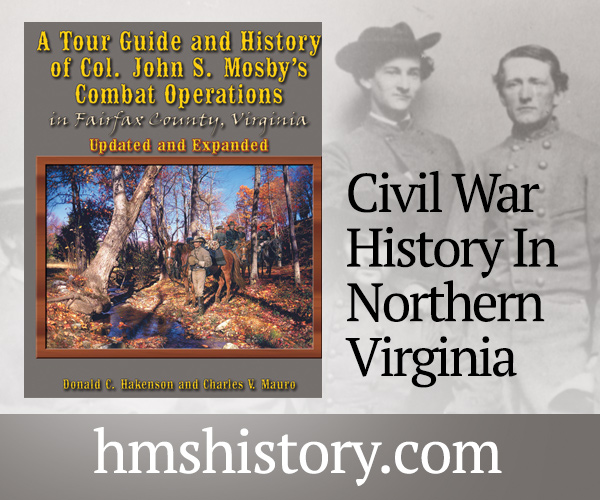Vol. XXXIX, No. 2
(80 pages)
Print edition: Visit our store to check availability
Digital edition: Visit JSTOR.org to purchase
Subscribe to MI
Explore the MI Archives:
Browse | Advanced search | Tutorial
Inside
Cover image
A quarter-plate ambrotype from the Paul Russinoff Collection pictures Maj. Benjamin Franklin Watson of the 6th Massachusetts Infantry and a personal attendant.
Table of Contents (p. 1)
Editor’s Desk (p. 2)
In “Musings on Preservation,” the editor discusses the word in the third of the publication’s motto: Showcase. Interpret. Preserve.
Mail Call (pp. 3-4)
Feedback includes praise for the New Hampshire gallery in the last issue, the identification of a backdrop, the discovery of a local connection to a New Hampshire soldier a note about image credits in a vibrant collector’s marketplace.
Military Anthropologist (p. 4)
A survey of 567 ambrotypes and 684 tintypes sheds light on plate sizes and the portion of each. Sixth-plate images dominate.
Passing in Review (p. 6)
Two books are reviewed: Yank and Rebel Rangers: Special Operations in the American Civil War (Pen & Sword Military) by Robert W. Black and Captured Images: Akron Photographers in the Civil War (self-published) by John P. Gurnish.
Photo Sleuth by Kurt Luther (pp. 8-11)
In “Investigating the Iconic Portraits of a USCT Drummer Boy,” Luther documents known variations of a pair of well-known cartes de visite of a youth pictured in tattered clothing in one portrait and a Union drummer in the other. The author examines the competing identifications of the subject as Taylor or Jackson and his regimental affiliation to the 78th or 79th U.S. Colored infantries.
Antebellum Warriors (p. 12)
A sixth-plate daguerreotype from the Mike Medhurst Collection features a boy holding a guidon and seated on a drum. His uniform and initials on the guidon connect him to the New York militia.
The Honored Few (p. 14)
Captain Dewitt Clinton Lewis of the 97th Pennsylvania Infantry received the Medal of Honor for rescuing a soldier in his command who became mired in a swamp during the Battle of Secessionville, S.C., on June 16, 1862.
Most Hallowed Ground (p. 16)
First Sergeant B. Fayette Green and his pards in the 126th New York Infantry began their service by being surrendered en masse at Harpers Ferry. They went on to distinguish themselves in battle at Gettysburg and the Overland Campaign, where Green suffered a wound at Cold Harbor that ended his combat career. He is buried in Arlington National Cemetery.
The Citizenry (p. 18)
In “A Capitol Policeman Inside the Dome,” we meet John Patterson Gulick, a native Pennsylvanian who lived in Illinois, Iowa, Michigan and Virginia before the war. He spent at least five years (1864-1869) as a police officer at the Capitol Building.
Fakes, Forgeries and Frauds by Perry M. Frohne (p. 20)
In “Confederate Remounts,” a companion to his previous column about Union remounts, Frohne shares tips to spot cartes de visite prints that have been carefully removed from mounts and replaced on new mounts to make them more salable.
A Savior of the Capitol by Paul Russinoff (pp. 22-31)
Benjamin Franklin Watson, a New Hampshire native who settled in Lowell, Mass., before the war, served in the 6th Massachusetts Infantry when the regiment received orders to report to Washington, D.C., during the days following the rebel attack on Fort Sumter. The author details Watson’s rise from a respected leader in Lowell to his leadership of the regiment as it journeyed through hostile mobs in Baltimore to sleeping in the U.S. Capitol and beyond. The story is illustrated with portraits of Watson and others.
Drummers (pp. 33-41)
A gallery of images collected in collaboration with Editor Dale Niesen of the Facebook group “The Image Collector” and contributions by collectors, reviewed by Contributing Editor Chris Nelson, is focused on soldiers pictured with their drums. All are Union musicians.
Tracking Booth by Richard A. Wolfe (pp. 43-46)
Everton Judson Conger went down in history for his role in the 1865 manhunt that ended in the capture and death of John Wilkes Booth, assassin of President Abraham Lincoln. There is, however, much more to his story. The author details Everton’s rise from a dentist in Ohio to a respected cavalry commander who caught the attention of Col. Lafayette Curry Baker. Everton’s brother, Seymour, served with him in the 3rd West Virginia Cavalry and suffered a death wound in 1864.
Case Number 16 by Patrick Naughton (pp. 48-51)
Respected Lt. John Sandford Williams of the 3rd Delaware Infantry found himself in a tough situation at the Battle of Hatcher’s Run. A fellow officer suffered a wound and pleaded with Williams to help him to safety. Williams acted with compassion and helped the man—and it resulted in his court martial. The author, a descendant of Williams, tells his ancestor’s story and reveals how commanders can treat honor and pride.
The Cambrian Oratress by Richard L. Leisenring, Jr. (pp. 52-55)
Susannah Evans came to New York City from her native Scotland in August 1863 on a crusade to promote the cause of temperance. Her journey in America benefitted soldiers who struggled with alcohol. She also turned her attention to aiding wounded men, including Sgt. Alfred A. Stratton of the 147th New York Infantry, who had suffered the loss of his arms in battle.
Not a Forty-Eighter by Daniel Carroll Toomey (pp. 56-59)
Social unrest in Germany during the mid-19th century ended in a nasty military crackdown that resulted in a wave of German immigration to the U.S. One of the soldiers who fought to put down the German rebels, Earnest Barth, followed them to America. After the start of the Civil War, he donned Union blue and helped put down the Southern rebellion. This is his story.
From Vivid Eggplant to Unpleasant Cheesy Hues by Ronald S. Coddington (pp. 60-64)
Concern about the yellowing and fading of albumen prints is almost as old albumen paper itself. Invented in 1850, it made the mass production of photographs possible—but the deterioration of the prints prompted the esteemed Photographic Society of London to open an investigation in 1855. This is a brief history of the problems and what today’s collectors can do to protect their treasures.
They Knew Gettysburg Before the Battle (pp. 67-70)
Included among the millions of artifacts in the collections of the Adams County Historical Society in Gettysburg, Pa., are a number of photographic portraits of townspeople. A selection of these images is pictured here. Each is identified and accompanied by a profile of the subject.
Connected by a Carte de Visite by Joseph G. Bilby and Gary D. Saretzky (pp. 71-72)
Rev. John G. Frazee of the 3rd New Jersey Cavalry posed for his portrait wearing the subdued uniform of a chaplain in the Camden, N.J., studio of Andrew Sims. A recent immigrant from Scotland, he was at the beginning of a long career as a lensman. The authors provide capsule biographies of the two men.
Behind the Backdrop: Origins, artistry and photographers by Adam Ochs Fleischer (pp. 73-74)
In “Lytle’s Baton Rouge Backdrop,” Fleischer examines the distinctive painted canvas featuring a plantation-style home used by Andrew David Lytle, an Ohio-born photographer who settled in Louisiana before the war. He is among a small cadre of photographers whose sitters included Union and Confederate soldiers.
Material Culture by Ron Field (pp. 75-77)
In “Early Uniforms of Duryée’s Zouaves, 1861,” Field examines the poor-quality uniforms furnished to the New Yorkers during the war’s first months. Three stereoviews by New York City photographer George Stacy illustrate the text.
Stragglers: Distinctive Images from MI contributors (pp. 78-79)
Included are portraits of Confederate soldiers who served in the 2nd Texas Cavalry, 17th Virginia Infantry, Col. John Singleton Mosby’s 43rd Cavalry Battalion, and the 4th Florida Infantry. Also pictured are two Union musicians.
The Last Shot (p. 80)
A sixth-plate tintype from the Dale Niesen Collection pictures a Union soldier holding up a pocket-sized book, G. Woolworth Colton’s New Guide Map of the United States & Canada With Railroads, Counties & c.





































